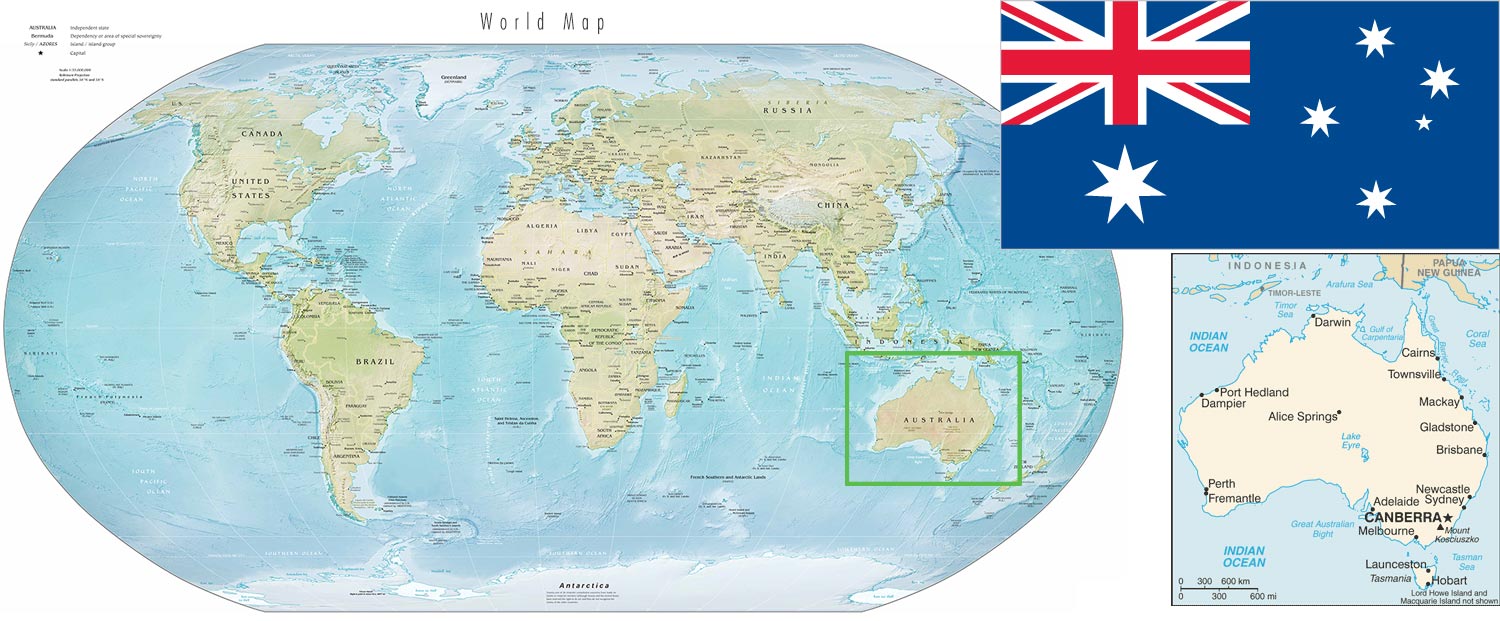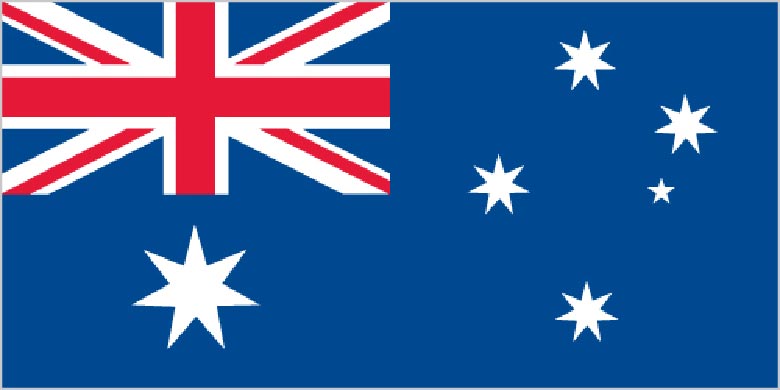
Australia
Australia, location-wise, belongs to Oceania, the continent between the Indian Ocean and the South Pacific Ocean.
Australia is the world’s smallest continent but sixth-largest country; the largest country in Oceania, the largest country entirely in the Southern Hemisphere, and the largest country without land borders; the only continent without glaciers; population concentrated along the eastern and southeastern coasts; the invigorating sea breeze known as the “Fremantle Doctor” affects the city of Perth on the west coast and is one of the most consistent winds in the world.
Australia’s area is in comparison slightly smaller than the US contiguous 48 states.
Travel Information
Topics like:
All our articles about Australia can be found here ↦ www.travel1000places.com/tag/australia/
Currency
Australian Dollar (AUD)
Australia Time Zone / Daylight Saving Time
See our page ↦ Australia Time Zone / Daylight Saving Time
This current year’s Daylight Saving Time can be found on all our pages within the sidebar or on our Homepage: www.travel1000places.com
Overview: Australia
Prehistoric settlers arrived on the continent from Southeast Asia at least 40,000 years before the first Europeans began exploration in the 17th century.
No formal territorial claims were made until 1770, when Capt. James COOK took possession of the east coast in the name of Great Britain (all of Australia was claimed as British territory in 1829 with the creation of the colony of Western Australia).
Six colonies were created in the late 18th and 19th centuries; they federated and became the Commonwealth of Australia in 1901.
The new country took advantage of its natural resources to rapidly develop agricultural and manufacturing industries and to make a major contribution to the Allied effort in World Wars I and II.
In recent decades, Australia has become an internationally competitive, advanced market economy due in large part to economic reforms adopted in the 1980s and its location in one of the fastest growing regions of the world economy.
Long-term concerns include an aging population, pressure on infrastructure, and environmental issues such as floods, droughts, and bushfires. Australia is the driest inhabited continent on earth, making it particularly vulnerable to the challenges of climate change.
Australia is home to 10 per cent of the world’s biodiversity, and a great number of its flora and fauna exist nowhere else in the world.
Description of Australia’s flag:

- blue with the flag of the UK in the upper hoist-side quadrant and a large seven-pointed star in the lower hoist-side quadrant known as the Commonwealth or Federation Star, representing the federation of the colonies of Australia in 1901;
- the star depicts one point for each of the six original states and one representing all of Australia’s internal and external territories;
- on the fly half is a representation of the Southern Cross constellation in white with one small, five-pointed star and four larger, seven-pointed stars
Australia Data & Facts: population, area, coastline
Location
Oceania, continent between the Indian Ocean and the South Pacific Ocean
Weather, Climate
Seasonal Temperatures and Rain information can be found here ↦ Australia Climate & Temperatures
Area
Australia is the world’s smallest continent but sixth-largest country; the largest country in Oceania, the largest country entirely in the Southern Hemisphere, and the largest country without land borders; the only continent without glaciers; population concentrated along the eastern and southeastern coasts; the invigorating sea breeze known as the “Fremantle Doctor” affects the city of Perth on the west coast and is one of the most consistent winds in the world
total: 7,741,220 sq km
land: 7,682,300 sq km
water: 58,920 sq km
note: includes Lord Howe Island and Macquarie Island
country comparison to the world: 6
Area – comparative:
slightly smaller than the US contiguous 48 states
Area comparison map:

boundaries
0 km, no borders to other countries
Coastline
25,760 km
Maritime claims
territorial sea: 12 nm
contiguous zone: 24 nm
exclusive economic zone: 200 nm
continental shelf: 200 nm or to the edge of the continental margin
Climate
generally arid to semiarid; temperate in south and east; tropical in north
Terrain
mostly low plateau with deserts; fertile plain in southeast
Elevation
mean elevation: 330 m
elevation extremes: lowest point: Lake Eyre -15 m
highest point: Mount Kosciuszko 2,229 m
Natural resources
bauxite, coal, iron ore, copper, tin, gold, silver, uranium, nickel, tungsten, rare earth elements, mineral sands, lead, zinc, diamonds, natural gas, petroleum
Note: Australia is the world’s largest net exporter of coal accounting for 29% of global coal exports
Land use
agricultural land: 53.4%
arable land 6.2%; permanent crops 0.1%; permanent pasture 47.1%
forest: 19.3%
other: 27.3% (2011 est.)
Natural hazards
cyclones along the coast; severe droughts; forest fires
volcanism: volcanic activity on Heard and McDonald Islands
Environment – current issues
soil erosion from overgrazing, industrial development, urbanization, and poor farming practices; soil salinity rising due to the use of poor quality water; desertification; clearing for agricultural purposes threatens the natural habitat of many unique animal and plant species; the Great Barrier Reef off the northeast coast, the largest coral reef in the world, is threatened by increased shipping and its popularity as a tourist site; limited natural freshwater resources
Environment – international agreements
Party to: Antarctic-Environmental Protocol, Antarctic-Marine Living Resources, Antarctic Seals, Antarctic Treaty, Biodiversity, Climate Change, Climate Change-Kyoto Protocol, Desertification, Endangered Species, Environmental Modification, Hazardous Wastes, Law of the Sea, Marine Dumping, Marine Life Conservation, Ozone Layer Protection, Ship Pollution, Tropical Timber 83, Tropical Timber 94, Wetlands, Whaling
signed, but not ratified: none of the selected agreements

